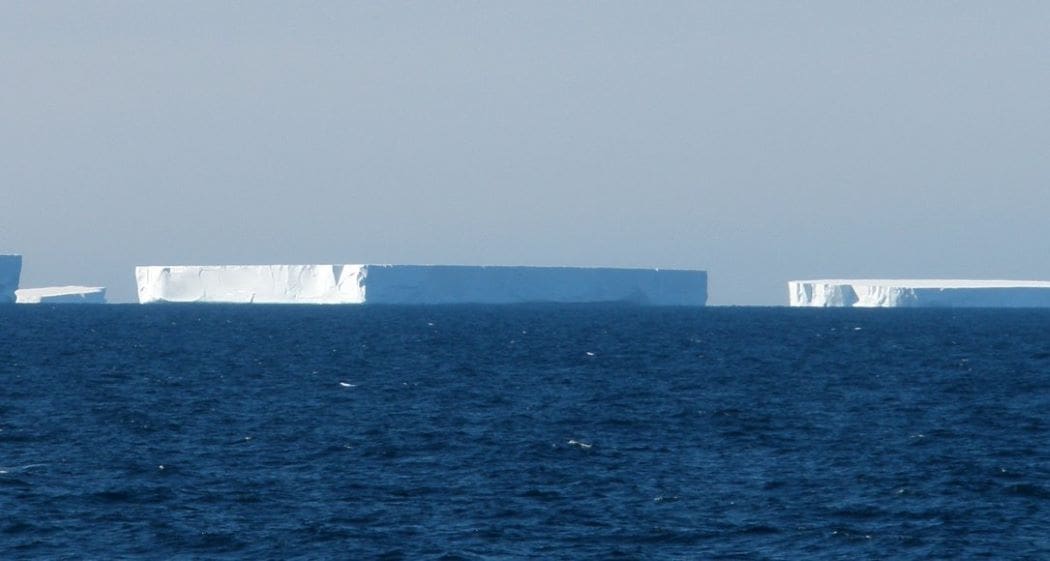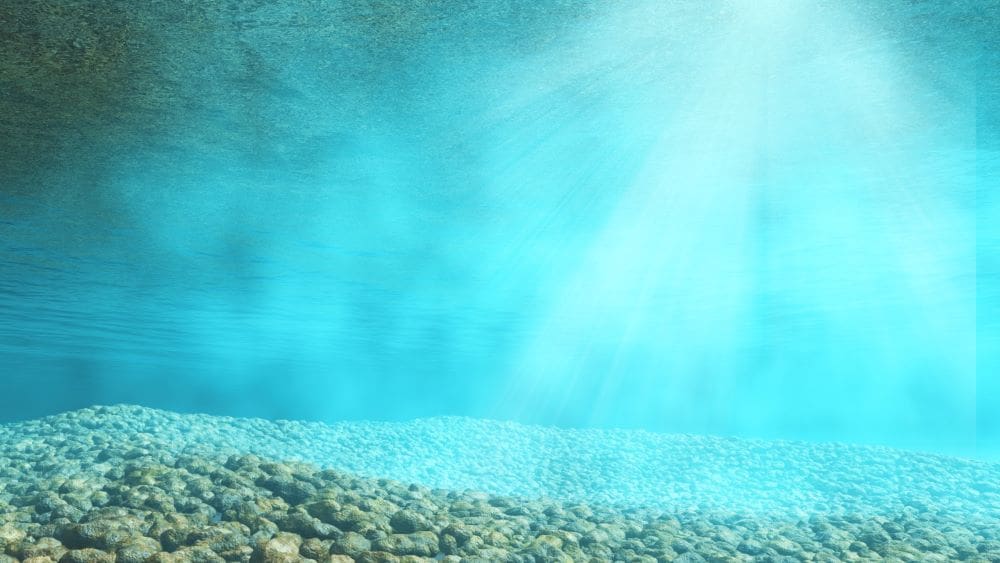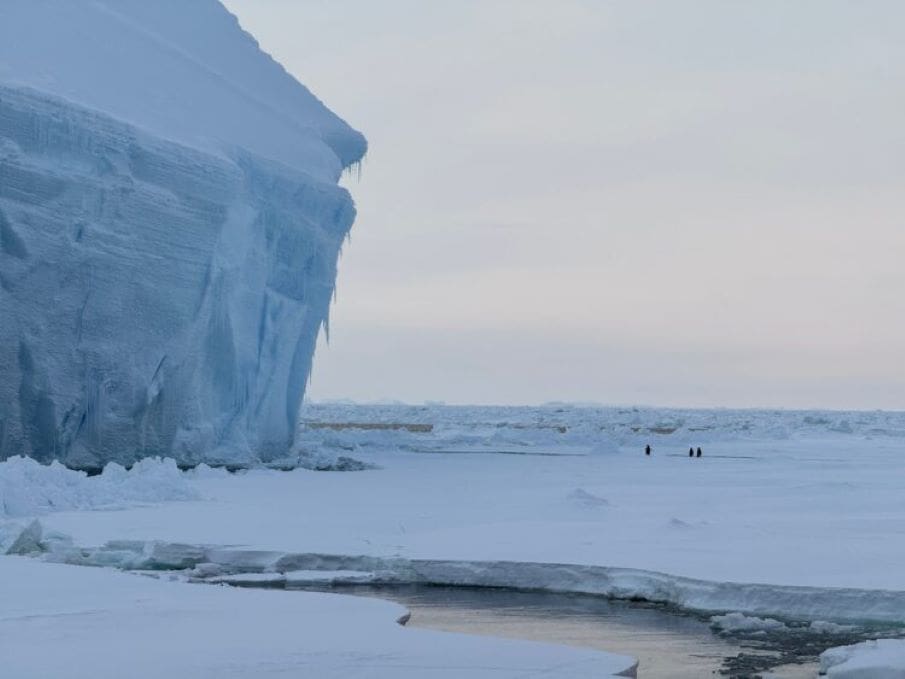Summary:
A massive Antarctic iceberg, A23a, is drifting toward South Georgia, a key habitat for seals, penguins, and albatrosses. While such icebergs regularly break away from Antarctica, warming ocean and air temperatures are accelerating the frequency and size of these events.
Researchers from Utrecht University are studying past iceberg movements to understand their role in ocean circulation and climate shifts. Their work also sheds light on an old mystery: the presence of Antarctic rock fragments near South Orkney, predating the formation of the Antarctic ice cap.
The study, published in Climate of the Past, suggests that icebergs carried debris to the region over 37 million years ago, implying that Antarctica had ice caps earlier than previously thought. Looking ahead, scientists warn that more fresh water from melting icebergs could disrupt ocean currents and carbon absorption. The ongoing EMBRACER climate research program aims to explore these effects further, as today’s changing climate could bring more and larger icebergs to the Southern Ocean in the near future.
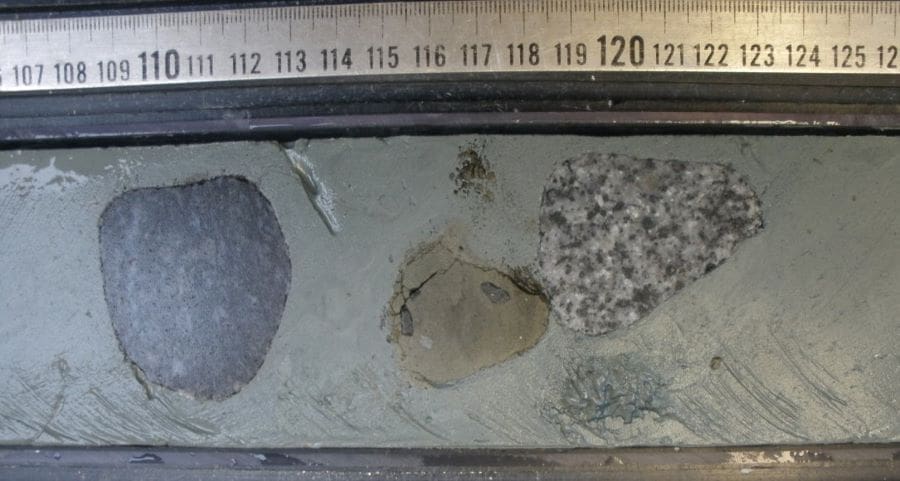
Mega-iceberg from Antarctica on collision course with South Georgia: harbinger of things to come?
It is no strange sight to see icebergs break off of the Antarctic ice cap and drift away, like the gigantic sheet of ice that is currently heading for the island of South Georgia. But climate change is making it happen more frequently, with ever-larger icebergs in the waters around Antarctica.
Researchers from Utrecht University are studying the routes that icebergs followed during geological periods of rapid ice cap deterioration, such as the ends of ice ages. That provides crucial information about the effect of melting icebergs on the oceans, and its consequences for the future. In the process, they also found an explanation for the mysterious discovery of ancient material from Antarctica near South Orkney, an island to the southwest of South Georgia.
Ice caps grow as snow falls on the top and gravity pulls them slowly towards the sea. There, they lose large volumes of ice via melting and calving of icebergs. If the ice cap growth keeps pace with loss at the edges, then it remains in balance and stays the same size.
But as the air and ocean around the south pole have warmed over the past few decades, icebergs calve off faster and more often: the meltwater on top weakens the ice, and the warmer ocean makes the ice shelves thinner. As a result, enormous ice blocks can break off from the shelves in a short amount of time.
Puzzle
The seas around South Georgia have a long history of iceberg research. The island is in the middle of waters that researchers call ‘Iceberg Alley’: a narrow strip of ocean full of icebergs that have calved off from the Antarctic ice cap, then pushed north by wind and ocean currents until they reach warmer seas and melt away entirely. Since Antarctica has had a large ice cap for around 34 million years, the remote islands around Iceberg Alley have seen countless icebergs pass by.
South Orkney is one of these islands, and scientists have found that it preserves evidence of icebergs from as long as 3 million years before the ice cap was formed 34 million years ago. The discovery had long puzzled researchers. In 2017 they found around the island of South Orkney fragments of debris that originated in Antarctica.
The only way for the Antarctic debris to travel all the way to South Orkney is via icebergs: the icebergs carry large amounts of stone fragments that glaciers had broken off of the Antarctic continent. When the iceberg melts, the debris sinks to the ocean floor.
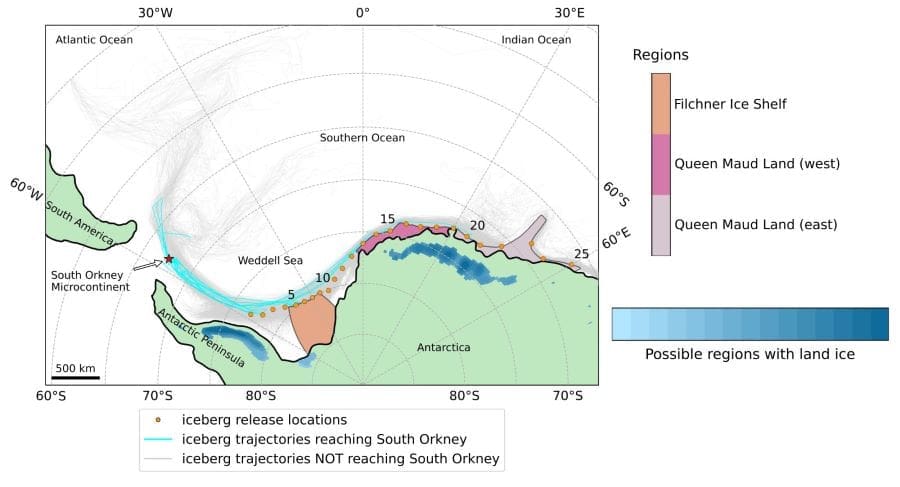
The scientists were not surprised to find Antarctic debris near South Orkney, considering its location in Iceberg Alley. But they were astonished at the age of the sediments: 37 million years, 3 million years older than Antarctica’s large ice cap. Could Antarctica have already had an ice cap in the warm period of the late Eocene? And how could these icebergs survive in the warm ocean conditions prevalent around Antarctica at that time?
Cold enough
Utrecht University student Mark Elbertsen offered an answer to these questions in a recently published Master’s thesis project. Under the supervision of Peter Bijl from the Department of Earth Sciences and Erik van Sebille from the Institute for Marine and Atmospheric Research, he seized this geological puzzle by the horns. Using computer models, Mark calculated the origins of the icebergs that reached South Orkney during the late Eocene, and how large the icebergs must have been to survive the journey.
He found that the Weddell Sea was cold enough at the time to transport medium-sized icebergs all the way to South Orkney. But that’s not all: the most logical starting point for the icebergs is also home to bedrock that corresponds to the types of rock found in the debris at South Orkney.
Apparently, during the late Eocene Antarctica had an ice cap that was large enough to reach the coastline, and it moved fast enough to produce enough large icebergs that could survive the warm Weddell Sea and reach South Orkney. The study thus demonstrated that sufficient snow fell on Antarctica in the late Eocene to facilitate the required growth of ice caps and icebergs, 3 million years prior to the large freeze-over of Antarctica.
Fresh water
Bijl and van Sebille are once again joining forces in research. Recent geological history has known repeated phases of high rates of iceberg calving during rapid transitions from ice ages to interglacial periods. The EMBRACER climate research programme offers a job position for a PhD student to investigate these so-called ‘deglaciation’ phases. By following icebergs in computer simulations, the new study will identify how much meltwater the icebergs lost in the Southern Ocean during the melting phases, and how that changed conditions in the ocean.
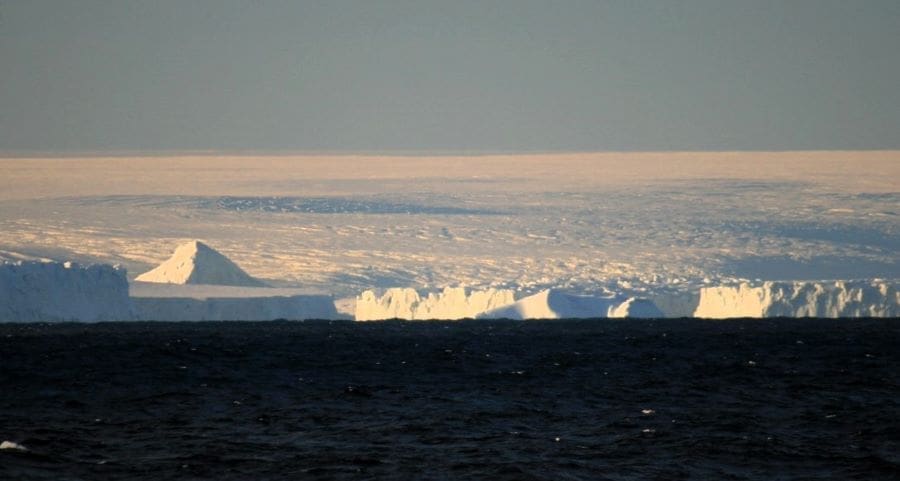
Scientists would also like to better understand the consequences of the large volumes of meltwater that will reach the Southern Ocean in the near future. More fresh water in the Southern Ocean could affect the deep ocean currents and the ocean’s ability to absorb carbon. If climate change continues at its current pace, the Southern Ocean will soon face more and larger icebergs than in the past. The new study will use geologic reconstructions to provide more clarity about the potential consequences for the region.
Adrift
In 1986, iceberg A23a broke off of the Filchner ice sheet deep in the Weddell Sea. This super-iceberg remained stuck on the bottom of the shallow Weddell Sea for decades, until it began to drift away in 2020. It rode the waves for several years, until it recently set a course for the southern coast of South Georgia. Scientists are closely monitoring the iceberg’s progress, because South Georgia is an important breeding ground for colonies of penguins, seals and albatrosses.
If iceberg A23a were to collide with the island, it would block countless animals’ access to breeding grounds and foraging waters. That is unlikely to happen, however, because the island is surrounded by a broad strip of shallow waters, against which A23a would most likely run aground. If that happens, the iceberg’s presence may even have a positive effect on the colonies, as there would be more food to find in the currents moving around the iceberg. The ocean’s currents may also guide the iceberg around the island, where it will gradually melt away in the open ocean.
Journal Reference:
Mark V. Elbertsen, Erik van Sebille and Peter K. Bijl, ‘Possible provenance of IRD by tracing late Eocene Antarctic iceberg melting using a high-resolution ocean model’, Climate of the Past 21, 441–464 (2025). DOI: 10.5194/cp-21-441-2025
Article Source:
Press Release/Material by Utrecht University
Featured image credit: IODP Expedition 318 science party (2010)

